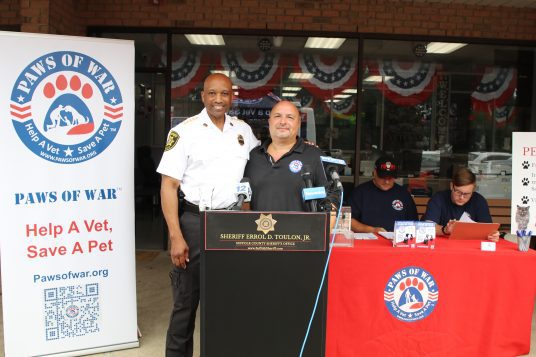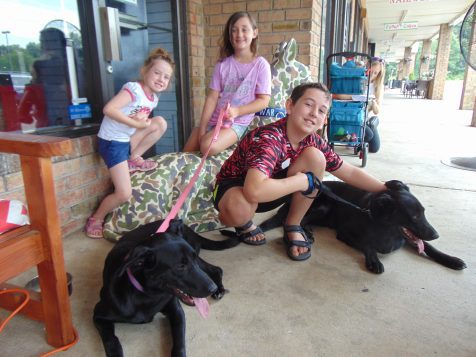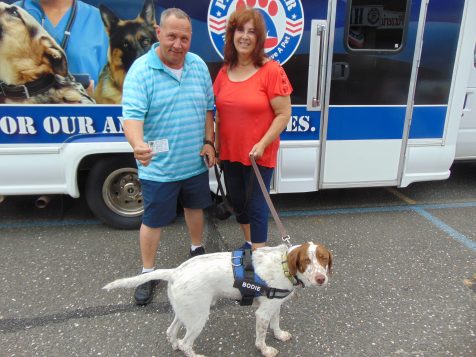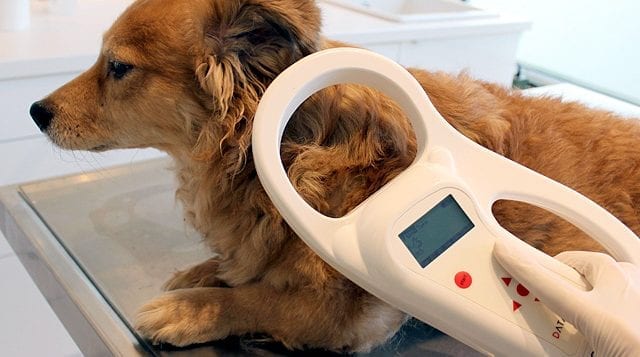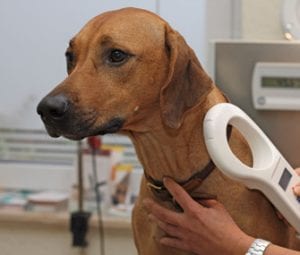July 29 was a hot day as 30 dogs and their owners stopped by Paws of War in the Nesconset Shopping Center for an important mission.
They were there for a free microchip and pet identification service event hosted by Paws of War, which trains and places support dogs with U.S. military veterans. The event was sponsored by the Suffolk County Sheriff’s Office. Sheriff Errol Toulon Jr. and Robert Misseri, president and founder of Paws of War, pictured right, were on hand to greet owners and pets.
For three hours, attendees took their dogs inside the Paws of War Mobile Veterinary Clinic to receive the microchips, which are implanted into their skin behind the shoulder blades. The size of a large grain of rice, microchip implants are radio frequency identification tags that provide a permanent form of identification and track a pet’s movements.
When an animal is lost, a microchip scanner can identify to whom a pet belongs. The sheriff’s office’s Lost Pet Network database can also track and locate lost pets when they are microchipped.
A lost pet can wind up in an animal shelter if an owner is not found. Approximately 10 million pets in this country are lost each year, according to the nonprofit American Humane Society’s website (humanesociety.org). The nonprofit also states that out of the lost pets in shelters with no ID tags or microchips, only 15 % of dogs and 2 % of cats are reunited with their owners.
Participants at the July 29 event received an ID card and were also able to receive free dog food, leashes, collars and more.
The Suffolk County Sheriff’s Office will sponsor two more free microchipping events for residents Aug. 11 outside the Yaphank Correctional Facility, 200 Glover Drive, and Sept. 17 in Patchogue, location still to be determined.

